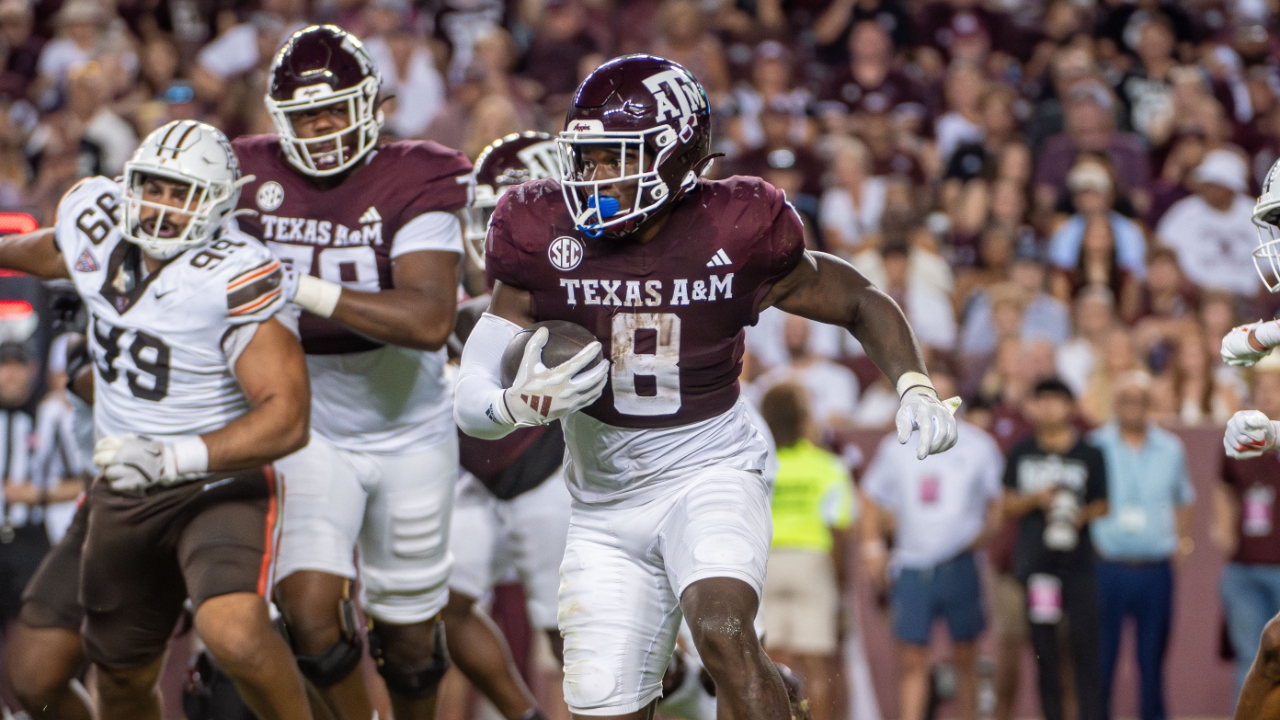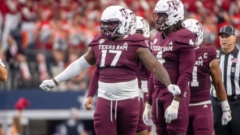
OK, Boomer: Old hallmarks still vital to winning football games
They roll their eyes. They talk behind my back. They reject words of wisdom.
Those arrogant whipper-snappers think they’ve got this college football thing all worked out. They say success is dependent on electrifying quarterbacks in high-tech offenses.
Any statements to the contrary aren’t considered. They just laugh and ask if I covered that Princeton-Rutgers showdown in 1869.
Insolent snots.
They should spend less time on TikToks, Hip Hops and Chat Snaps (It’s Snapchat, OB...) and more time paying attention to what really wins football games: Running and stopping the run.
Before dismissing me with a snide “OK, Boomer,” they should check statistics.
Each of the 12 teams in the College Football Playoff was ranked no lower than 72nd in rushing offense. Five of them — Boise State, Tennessee, Notre Dame, Penn State and Arizona State — were in the top 20.
Stopping the run was even more vital. Six playoff teams were among the nation’s top 20 in run defense. Four more were in the top 40. Notre Dame is 41st.
The only playoff team that didn’t field a strong run defense was No. 85 Clemson. By the way, Clemson allowed more than 200 rushing yards in three of its four losses. The Tigers gave up 169 rushing yards to Georgia in their other loss.

Still say new-fangled offenses and hot-shot quarterbacks are the keys to winning championships?
Notre Dame quarterback Riley Leonard ranks 94th nationally in passing.
That’s not to say a spectacular quarterback shouldn’t be appreciated. Obviously, a dynamic signal-caller is a great asset.
Fortunately, Texas A&M has a quarterback who could be dynamic. As a redshirt freshman, Marcel Reed ranked 78th in total offense despite entering the season as a backup. He passed for 1,864 yards and 15 touchdowns. He rushed for 543 yards and seven touchdowns.
Reed is not yet dynamic, though LSU would certainly argue. Florida might, too.
Still, he must improve. A strong running game will help him.
The Aggies should have that in 2025. Their running attack could be more productive than last season when A&M averaged 195 rushing yards to rank 26th in the country.
A&M has its entire offensive line returning. Also, All-SEC running back Le’Veon Moss will be back from injury. Rueben Owens already is.
The bigger question is whether the Aggies can stop the run. Indeed, that strikes this geezer as the biggest question facing A&M next season.
In their four regular season losses, the Aggies allowed 198 rushing yards and two rushing touchdowns to Notre Dame, 286 yards and three touchdowns to South Carolina, 168 yards and three touchdowns to Auburn and 240 yards and a touchdown to Texas.
A&M must improve. Defensive linemen must be stronger. Linebackers have to get better at filling holes. Defensive backs must make strides in run support. Big plays must be reduced. A&M allowed 19 runs of 20 yards or more last season. Five resulted in runs of at least 40 yards.
Reed’s upside, a veteran offensive line, productive running backs and an influx of speed at receiver via the transfer portal suggest A&M’s offense is potentially explosive in 2025.
Cornerback Will Lee III’s decision to shun the NFL Draft, Tyreek Chappell’s return from injury and the portal additions of cornerbacks Jordan Shaw and Julian Humphrey hints at an upgrade in pass coverage.
But can the Aggies stop the run? They have seven months to bolster their run defense.
If that can be accomplished — a huge “IF” — the Aggies could be serious contenders for the playoffs in 2025. If not, next season could be another disappointment.
Now…get off my lawn.
